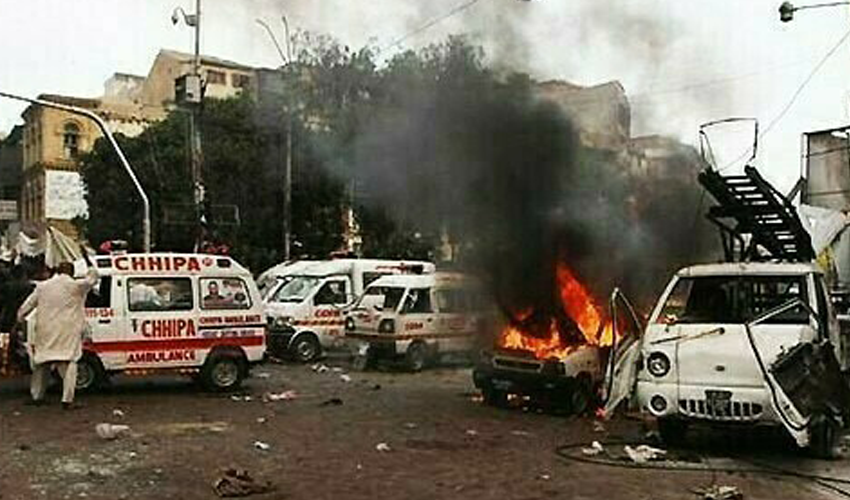Three killed in suicide attack on foreign nationals in Karachi
Two security guards, a passer-by among those injured in attack in Mansehra Colony of Landhi
Two security guards, a passer-by among those injured in attack in Mansehra Colony of Landhi
Sukkur-Hyderabad is 'backbone' of remittances: Nasir Shah
ECP issues notification in line with election of Ijaz as MNA
The government is going to allocate $28 billion for the production of advance chip manufacturing
'We will thwart efforts pf rigging through power of masses', says Mengal
Imran Khan emphasises wife's condition deteriorating by the day, with daily irritation in stomach
Extension comes ahead of 2024 European championships
48-year-old Englishman remains sport's foremost attraction
Ex-Punjab CM's testimony before Faizabad sit-in commission emerges
Two security guards, a passer-by among those injured in attack in Mansehra Colony of Landhi
Statement cautions security environment remains complex, can change quickly depending on political situation
Miniser vows 'zero cheating' this time, claims crackdown has almost eradicated 'booti mafia'
American currency depreciates by 19 paisas in interbank market, bringing its value to Rs278.25
Report says Pakistan's growth rate in 2024 expected to surpass that of 2023
Swearing-in ceremony held at Governor House where governor administers oath to ministers
Report says Pakistan's growth rate in 2024 expected to surpass that of 2023
Extension comes ahead of 2024 European championships
Sharif bagged immense popularity with ‘Bakra Qiston Pay’
The government is going to allocate $28 billion for the production of advance chip manufacturing
Economic hardships mount as Taliban support terrorism, trade slumps
Study discovers that sound coming from a disturbed plant could be heard over a meter away
Economic ups and downs can be managed through 'Charter of Economy'

